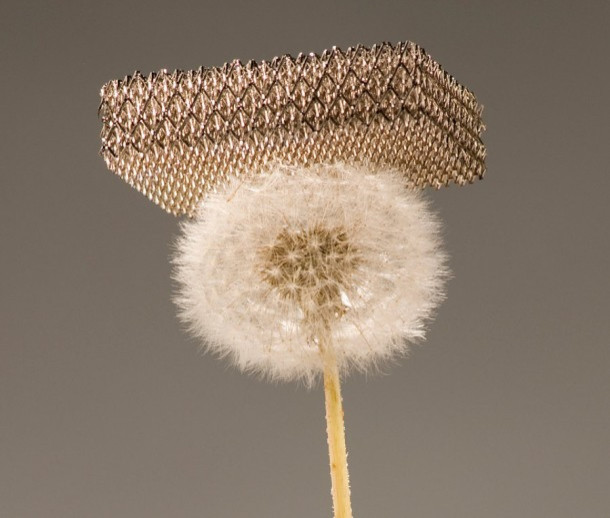World's Lightest Material Invented: Scarcely Denser Than Air

Scientists at HRL Laboratories LLC, the California Institute of Technology, and the University of California at Irvine have invented a new material so light that even a feathery dandelion can comfortably hold its weight without having its little fluffy seeds mashed.
According to the scientists, the material is a microlattice of hollow tubes of nickel consisting of 99.99 percent of air. Dubbed ultralight metallic microlattice, it is claimed to be the lowest-density material in existence.
The material is so lightweight that even styrofoam is 100 times heavier than it is. The material's density is 0.9 milligram per cubic centimeter, not including the air in or between its tubes. That density is less than one-thousandth that of water, as described by the scientists in the Nov. 18 issue of Science.
The trick is to fabricate a lattice of interconnected hollow tubes with a wall thickness 1,000 times thinner than a human hair, lead author Tobias Shandler of HRL said in a UC-Irvine news release.
Bill Carter, manager of the architected materials group at HRL, said that to understand the structure of the material, it can be compared with either the Eiffel Tower in Paris or the Golden Gate Bridge over San Francisco Bay. Like each of them, the material is light and weight-efficient, but on a nanoscale, the Los Angeles Times reported.
The material seen in the picture above is made out of 90 percent nickel. According to Carter, however, it can be made out of other metals as well -- the nickel version was just the easiest to make, the report stated.
Materials actually get stronger as the dimensions are reduced to the nanoscale, explained UC-Irvine mechanical and aerospace engineer Lorenzo Valdevit, the school's principal investigator on the project. Combine this with the possibility of tailoring the architecture of the micro-lattice and you have a unique cellular material.
According to the scientists, the material, extraordinarily strong and shock-absorbent, is like a feather. It floats down, and its terminal velocity depends on the density. When dropped from shoulder height, it takes more than 10 seconds to touch the ground.
The project was conducted under auspices of the U.S. Defense Advanced Research Projects Agency.
© Copyright IBTimes 2024. All rights reserved.






















